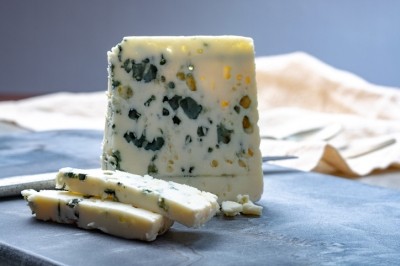Mozzarella under the microscope: Scientists pinpoint the microbes essential to making the unique Italian cheese

Buffalo mozzarella from Campania has been recognized as a delicacy and has been protected under EU law for nearly 30 years. What makes this mozzarella so special is believed to be the natural whey starter that contains microbes that are crucial to developing the cheese. Scientists from Italy used new sequencing technology, which gives a detailed picture of what microbes are present and in what proportions, to learn how microbes make mozzarella.
“This study sheds light on the intricate interactions of microorganisms throughout the manufacturing process and fosters a deeper understanding of the craftsmanship behind this esteemed Italian cheese,” said Dr Alessia Levante of the University of Parma, lead author of the study in Frontiers in Microbiology.
To qualify for protected designation of origin (PDO) status, buffalo mozzarella must be made according to a specific recipe. Raw or pasteurized water buffalo milk is heated and inoculated with rennet and natural whey starter. This starter causes the curd to acidify quickly, bringing it to the right pH and making it stretchy enough to be molded. The curds that form are ripened for about four hours until they reach the correct pH, when they become elastic and can be stretched and molded under boiling water. These curds are then hardened under running water and brined. Minor variations in this procedure make the difference between the products of different dairies.
To investigate the role of bacteria, and whether this varies between traditional dairies and more modern ones, Levante and her team selected two dairies in Campania that produce mozzarella which qualifies for PDO status: one larger and using more modern technology, one smaller and using more traditional processes. They took samples of the dairies’ milk, natural whey starter, cheese curd before stretching, brine, and mozzarella.
“While both dairies produced PDO mozzarella di bufala Campana, subtle variations, such as temperature and duration of processes, influenced the cheese’s microbial composition and potentially impacted organoleptic properties,” said Levante.
Bacteria get a pizza the action
Nineteen samples were concentrated enough to perform a gene sequencing, from which the researchers could identify the microbe species present and the proportions they appear in.
The team found that the pasteurized milk used by the more modern dairy added fewer microbes and species of microbes to the process than the thermized milk used by the more traditional dairy, but that the brine samples were as rich in species as the processed cheese samples. During the curd process, a small number of species develop and take over.
The brine also offers a source of microbial diversity: it inoculates the external layer of the cheese with new microbes as it touches the cheese surface. However, not all the microbes in the brine appear in the cheese. This may be because they are not suited to living on the cheese, or because they develop later in the cheese’s shelf-life, after the samples of cheese were taken. Despite the large number of species of microbes available in the milk and the brine, it seems that the microbial make-up of mozzarella is most influenced by the natural whey starter.
“We are planning a larger project to investigate more deeply the role of raw buffalo’s milk in defining the microbiota,” added Levante. “This study’s scope was limited to two dairies and a specific sampling size. To provide more comprehensive insights into the microbial intricacies of traditional food production, future research aims to encompass a larger number of producers and manufacturing days.”
Reference
The microbiota of Mozzarella di Bufala Campana PDO cheese: a study across the manufacturing process
Frontiers in Microbiology
DOI: 10.3389/fmicb.2023.1196879















